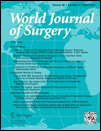Assessment of Intraparenchymal Injection of 1% Patent Blue Dye in the Upper Outer Quadrant of the Breast to Identify Sentinel Lymph Node in Early Retro-Areolar Breast Cancer in Women: A Tertiary Centre Experience in Egypt
Abstract
Background
Sentinel lymph node biopsy is the gold standard for axillary assessment of patients with clinically node negative breast cancer. The current internationally accepted methods comprise of the usage of either a radioactive tracer, vital stains or the combination of both. However, in developing countries radioactive tracer is not widely used due to its high cost and limited availability. In addition, the classic retro-areolar blue dye injection has a high failure rate.
Objective
Our study aimed to assess the efficacy of patent blue dye injection in the upper outer quadrant of the breast after validation by concurrent usage of radioactive nanocolloid, in comparison with the classic retro-areolar injection in identifying the sentinel node.
Methods
A randomized control study involving 279 patients randomly divided into two groups. In group A lateral injection of 1% patent blue dye (validated by radioactive nanocolloid) was used, while subdermal patent blue dye injection in the retro-areolar space was performed in group B.
Results
The new technique showed the promising results with lower failure rate (3.4%) in comparison with the classic retro-areolar patent blue injection (13.7%).
Conclusions
The lateral injection technique can be result in comparable results to the combination technique with the added benefit of being widely available and a cheaper option especially in developing countries.




